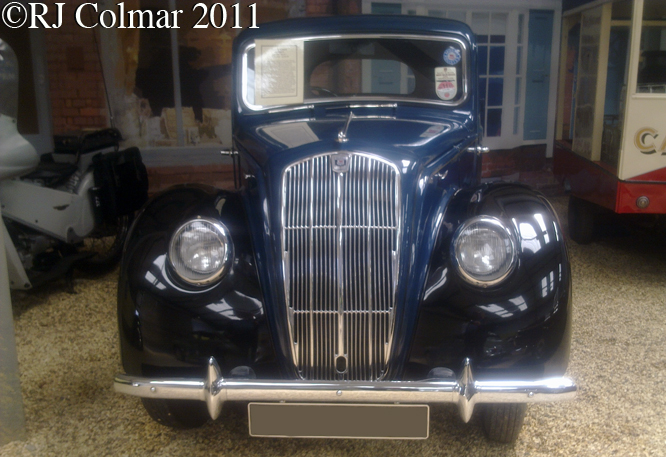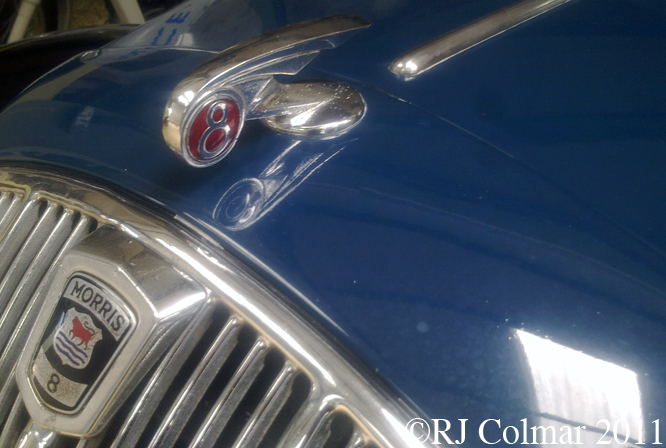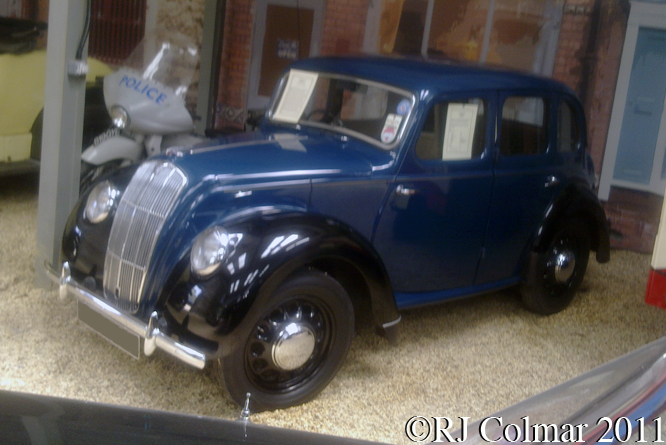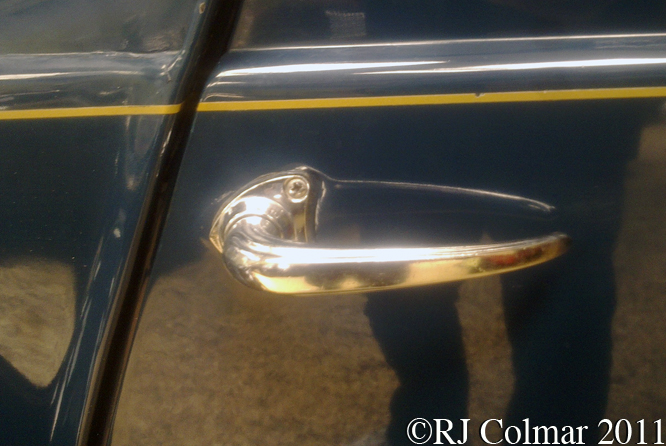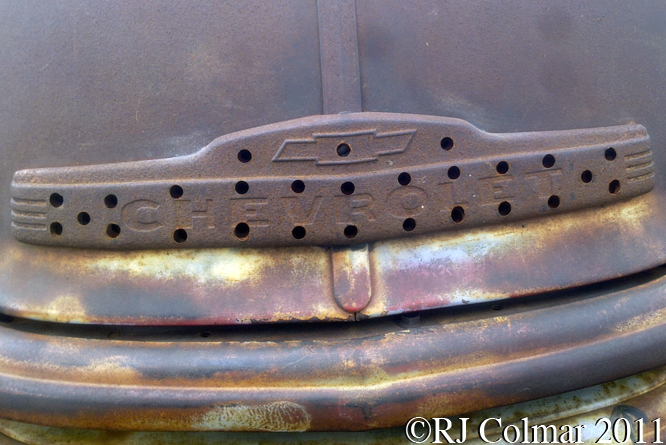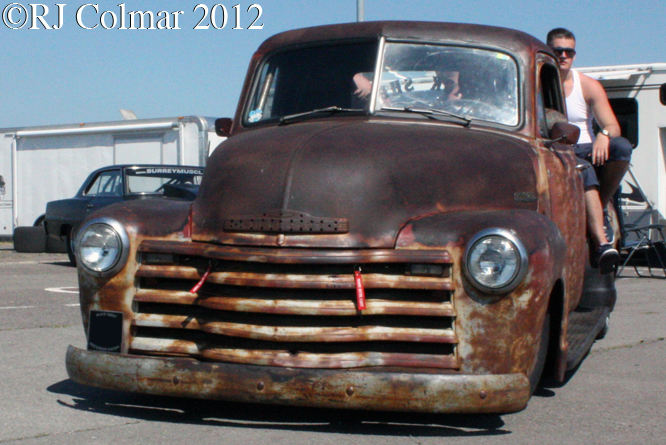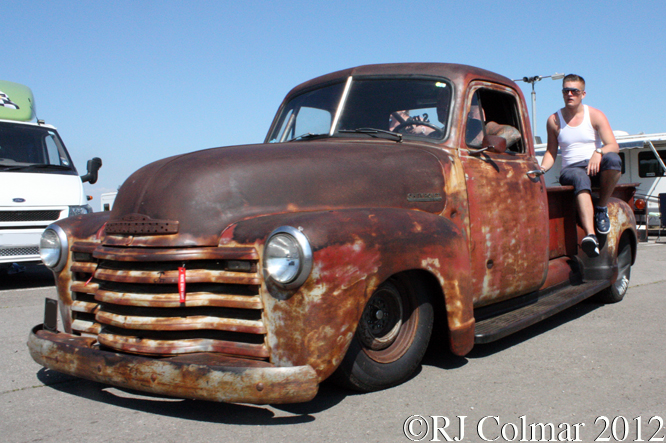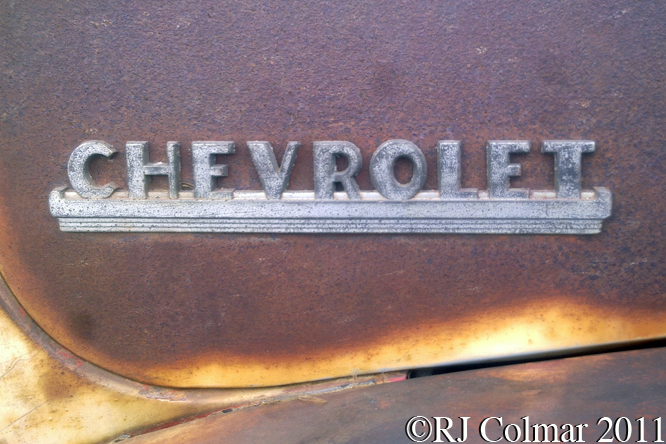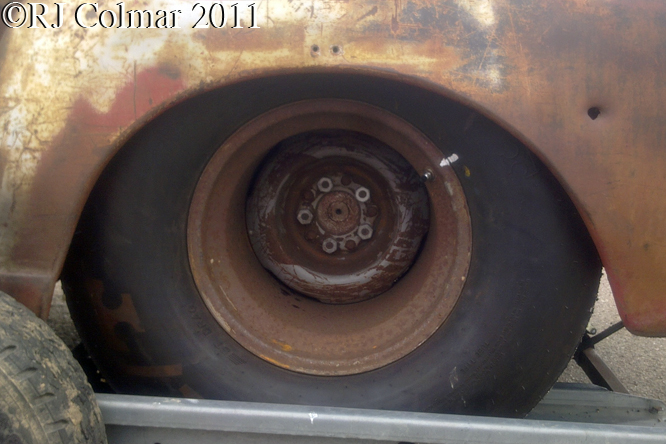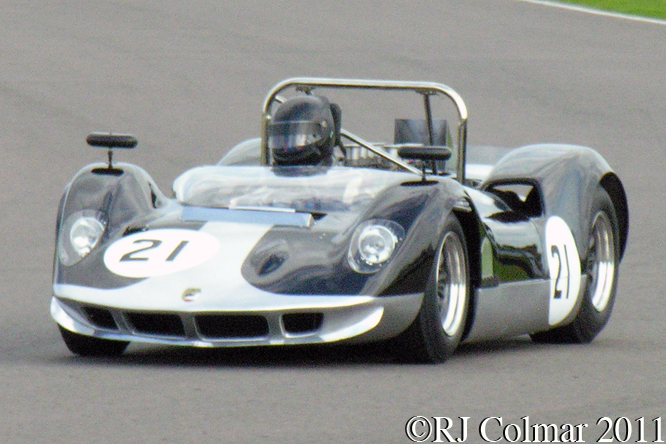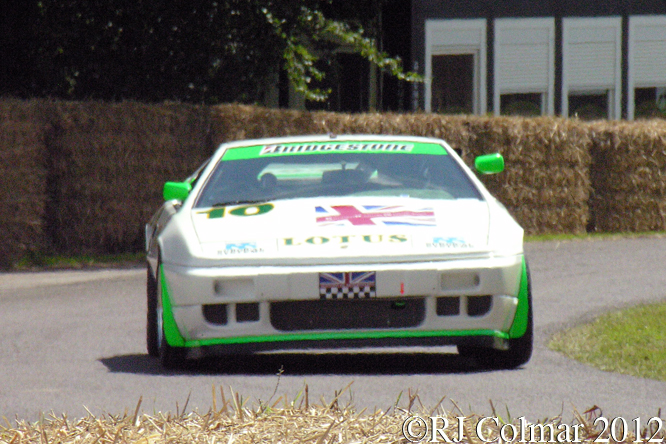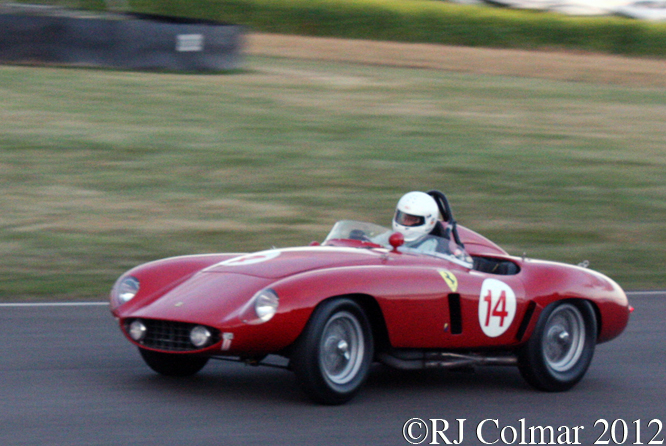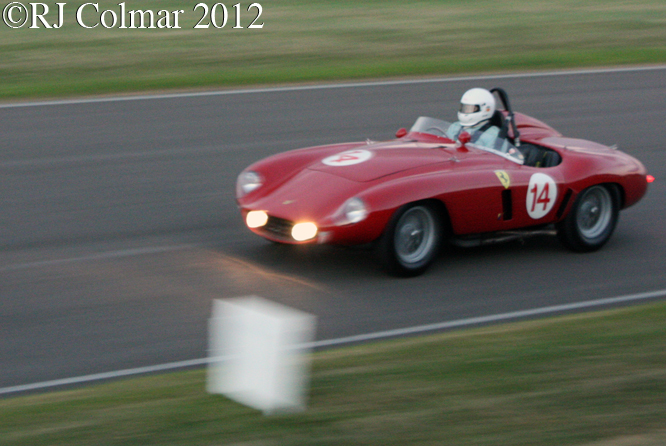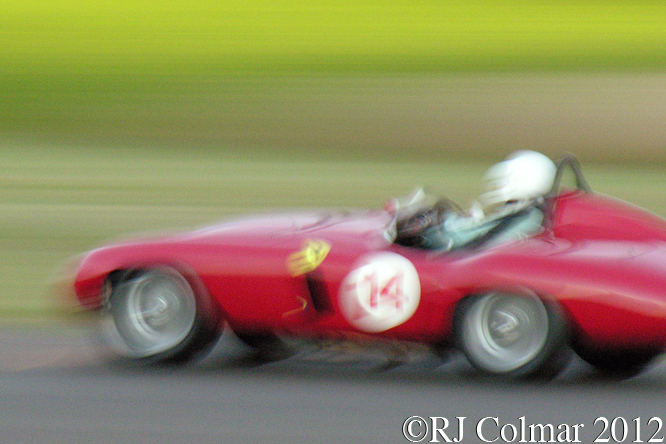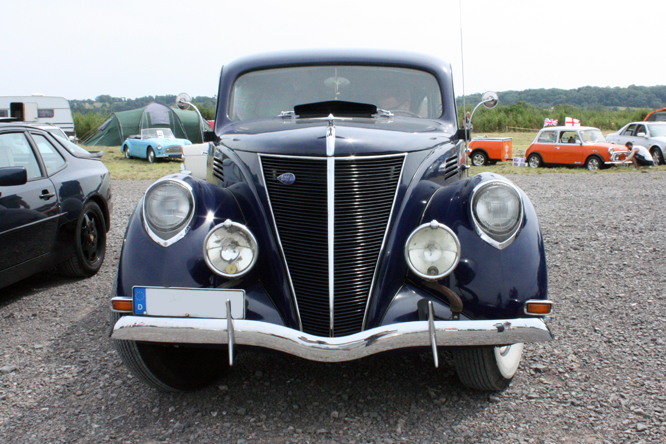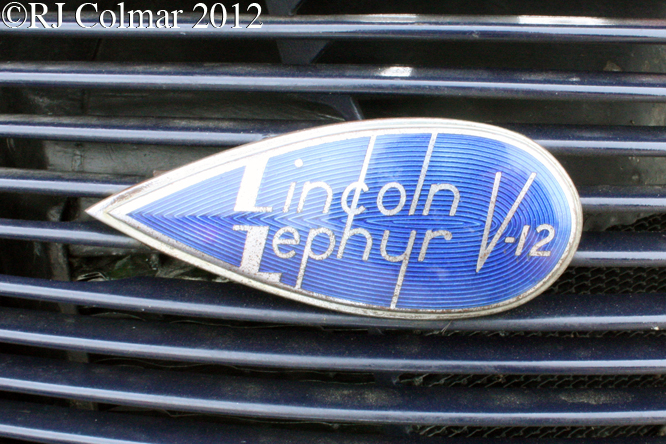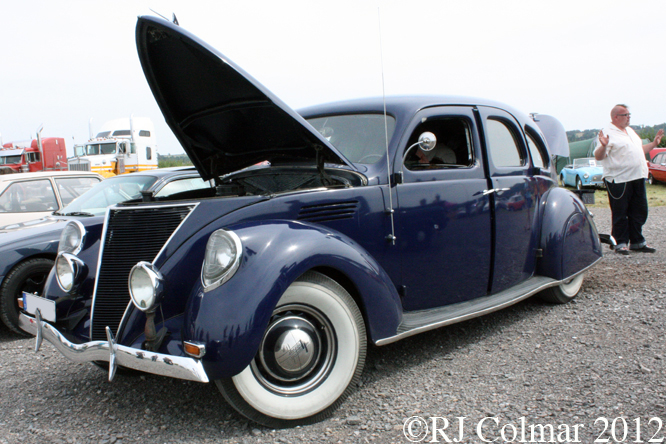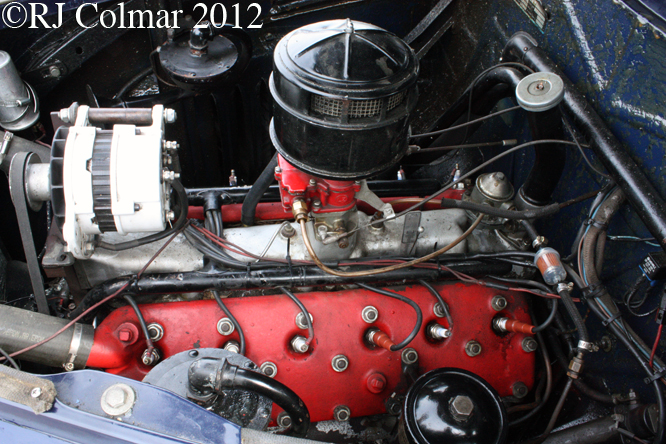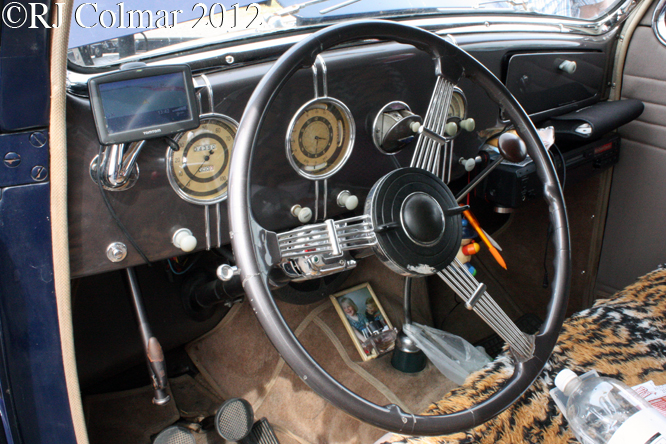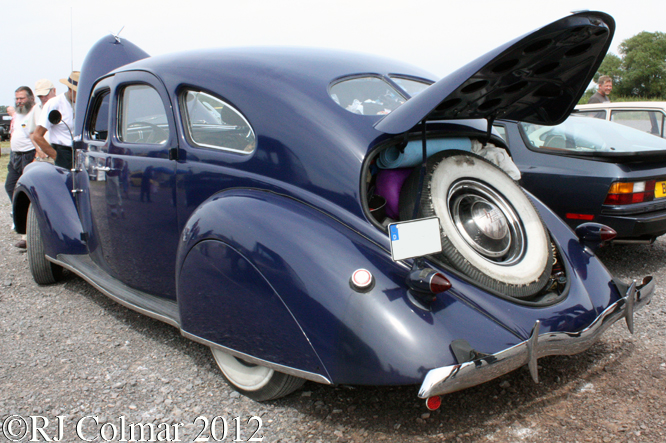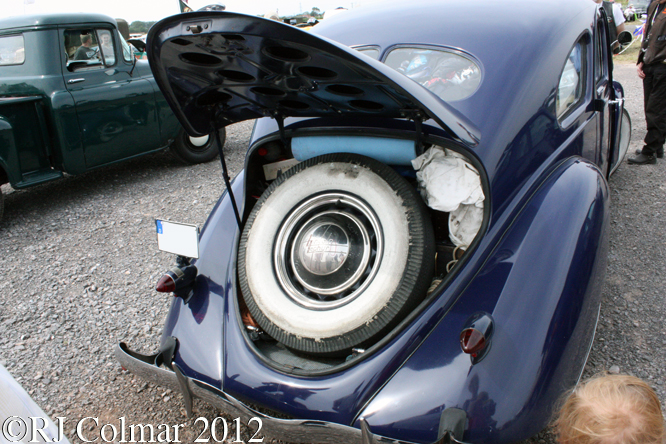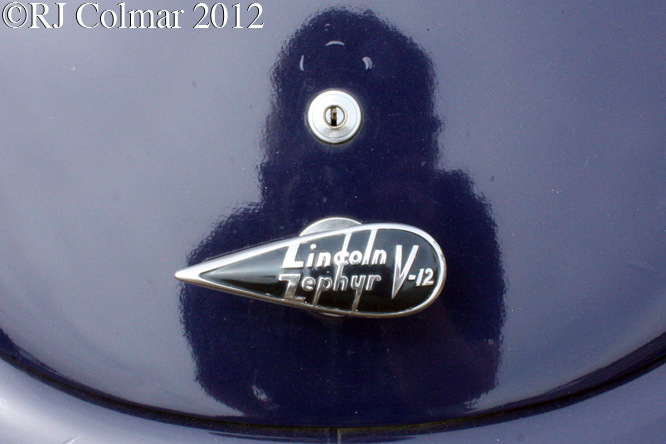Sunday finally brought months of waiting to an end for this race fan as I headed to Thruxton after teaching my Mum how to use her cruise control very early on Sunday morning.
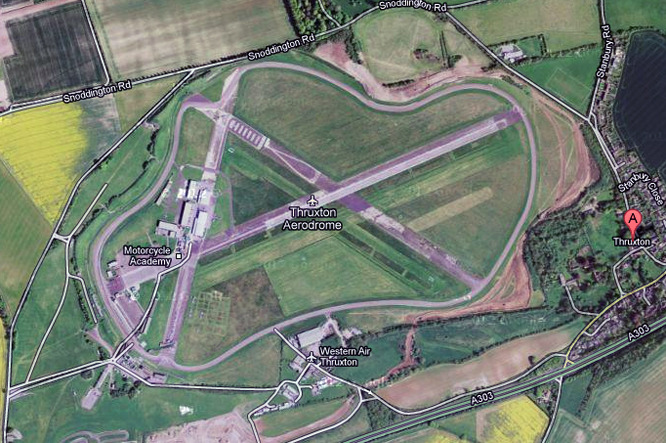
Thruxton Circuit in Hampshire like many British race tracks began life as a military air base during the 1939 – 45 war, it opened in 1940 and served as a base for the RAF and USAF troop carrying aircraft and gliders notably used for the D-Day landings on June 6th 1944 and many subsequent operations requiring large numbers of air borne troops. The first race meetings were held on a circuit using the perimeter roads in the 1950’s but the track was considered too bumpy and it was not until the British Automobile Racing Club, BARC, needed a new home following the closure of the Goodwood circuit in 1966 the Thruxton was reactivated more or less in the form we know it today.
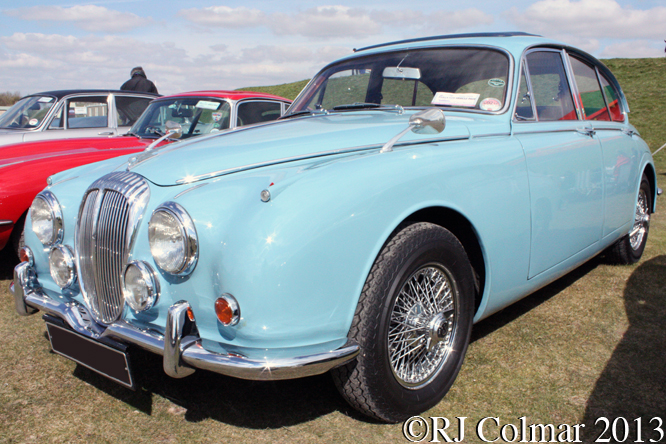
Last time I was at Thruxton well known Grand Prix pundit and 13 time Grand Prix winner David Coultard was still driving in Formula Ford in 1989, my first visit to Thruxton a couple of years earlier was notable for a win by my school pal Sven driving his Alfa Romeo Alfasud for whom I was acting as gofer. Consequently I got to drive his car round the track at snails pace following Sven as he stood in the back of the victory parade lap car. The entrance to the circuit on Sunday was flanked by a variety of Mini’s, Triumphs and Jaguars, in amongst the Jaguar Enthusiasts Club vehicles was this 1969 Daimler V8 250.
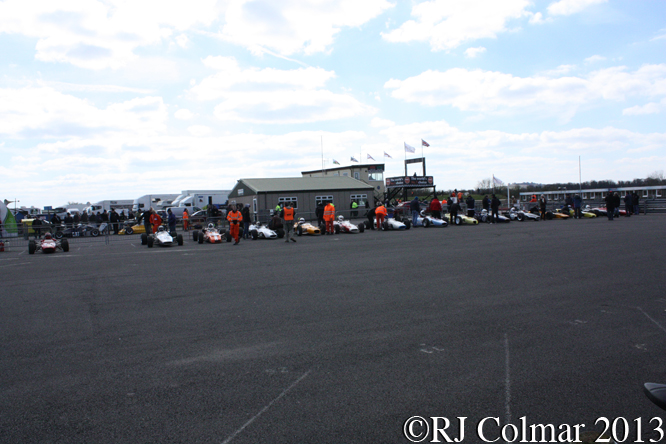
I got to the track just as the last practice was about to begin above the HSCC Classic Racing Cars, comprising Formula 2,3,B and Ford open wheelers dating from 1963 to 1970 line up in the holding area prior to the start of their practice session.
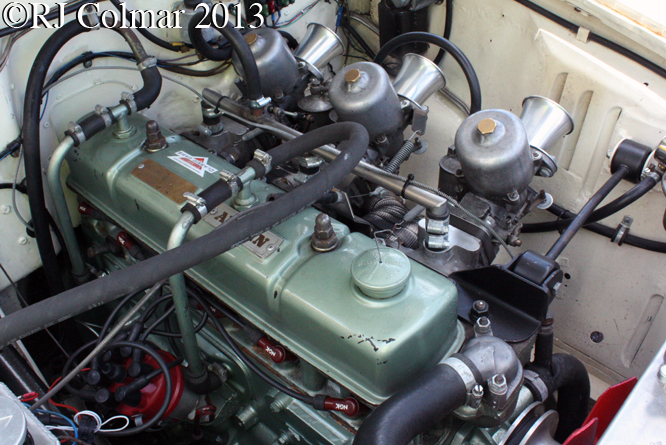
The paddock was full of delights like this 1958 six cylinder Austin A105 of the type that Jack Sears used to win the very first British Saloon Car Championship in 1958. Thruxton has a great mix of corners from tight 90 degrees to long sweepers meaning this A105 driven by Andrew Davenall found it’s self in a race long scrap with the much better handling Mini Cooper of David Dunnell which went in favour of the former towards the back of the HSCC Historic Touring Car field.
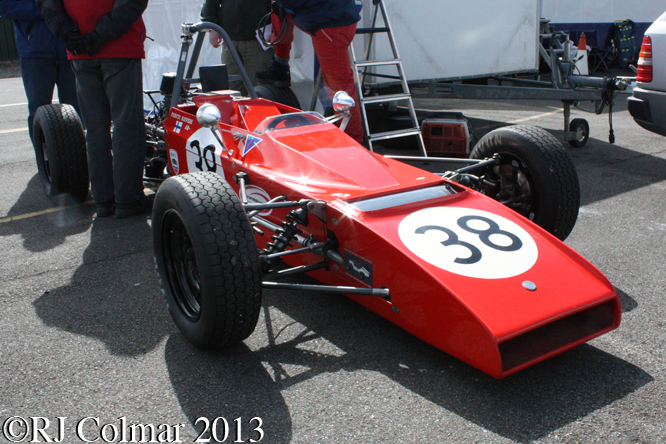
Making a welcome appearance from Finland in the Historic Formula Ford race was this 1971 Kvanti Mk I driven by Pertti Kilveri.
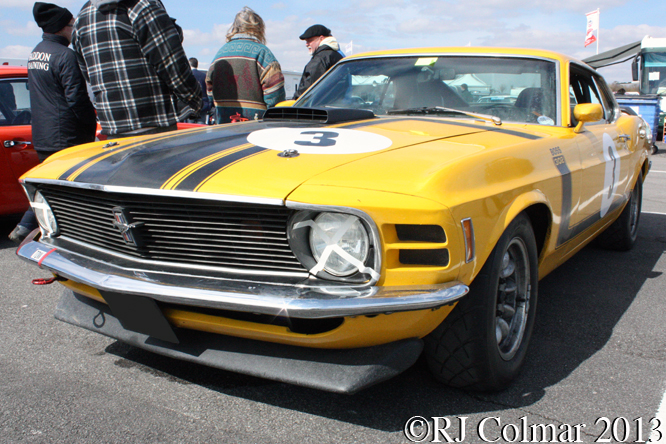
Another car that was to find it’s self in the midst of a mid field scrap was this 1969 Boss Mustang driven by Martin Edridge which managed to edge out the 1969 Camaro driven by Nick Savage both of whom were miles behind the better handling Lotus Elan’s that took the top three spots in the HSCC Historic Road Sports Championship.

There were two races for racing cars powered by 2 litre 92 cui motors at Thruxton on Sunday the Martini Trophy Race featured 2 litre Group 6 cars like the BMW powered 1976 Osella PA4 driven by Italian Cosimo Turizio unfortunately Cosimo retired shortly before the end of the race handing Ray Mallock driving a 1976 Mallock Mk18 in the invitational class a second place finish.
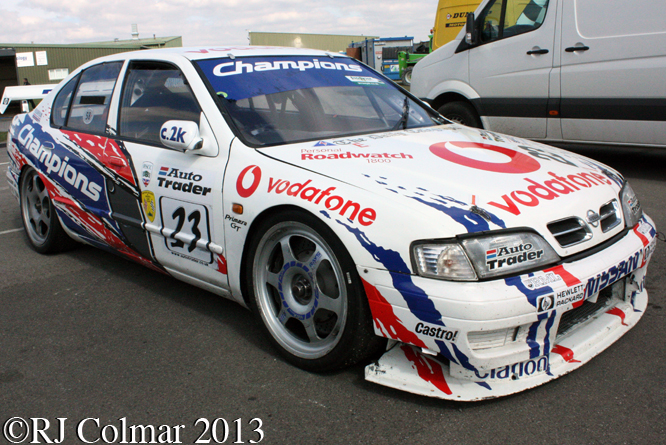
The Super Touring Car Race featured Derek Palmer’s 1999 Nissan Primera GT, which was originally built and prepared by Ray Mallock Limited (RML) for Laurent Aiello who became the first Frenchman to win the British Touring Car Championship.
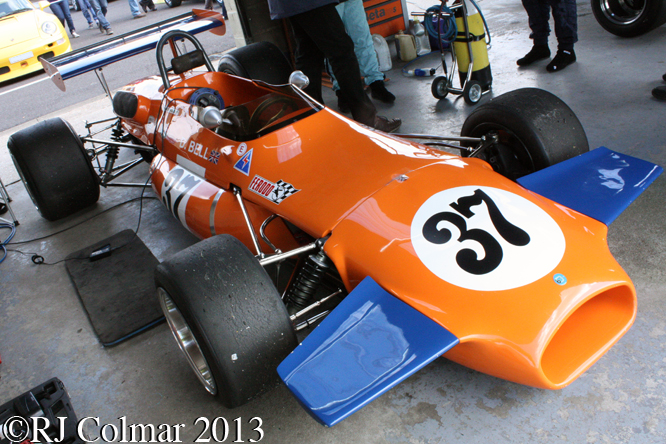
Ted Walker was in the pits time keeping for Lincoln Small who was driving the Brabham BT30 in the featured Jochen Rindt Trophy race. Lincoln’s Brabham is the same one that Derek Bell drove for Tom Wheatcroft to a second place finish in the 1970 European Formula 2 Championship.
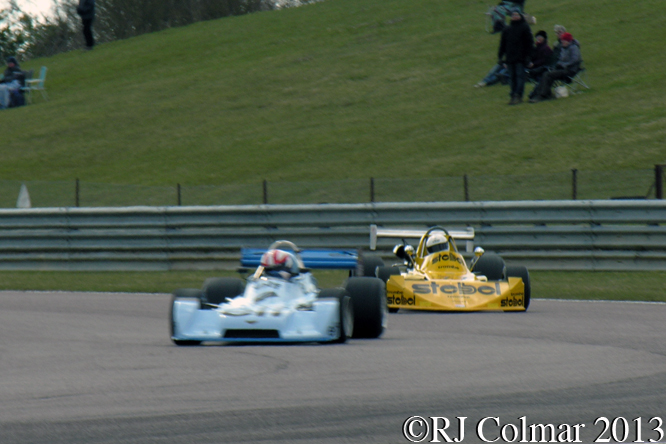
The Jochen Rindt Trophy race on Sunday was won by Martin O’Connell driving a 1977 Chevron B40 that looks as though it might be the same won as Alain Prost drove for Fred Opert prior to becoming a four time World Champion. Martin is seen above leading Andrew Smith’s March 742 car at Campbell Corner on the opening lap. Andrew finished second but only after loosing a couple of places in the opening laps and regaining them.
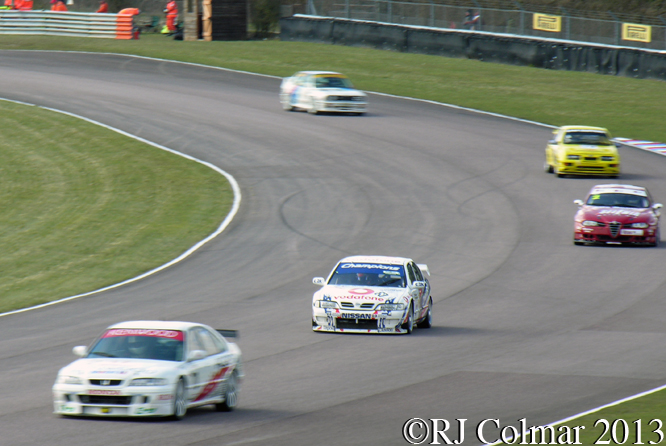
There was not a huge entry for the Super Touring Car Race on Sunday, partly because some of the entries were lost after the race for these cars held the day before. However Derek Palmer in the Nissan was always ready to take any advantage of Stewart Whyte’s 1996 Honda Accord although he did not have the speed to challenge Stewart for the top spot on the podium.
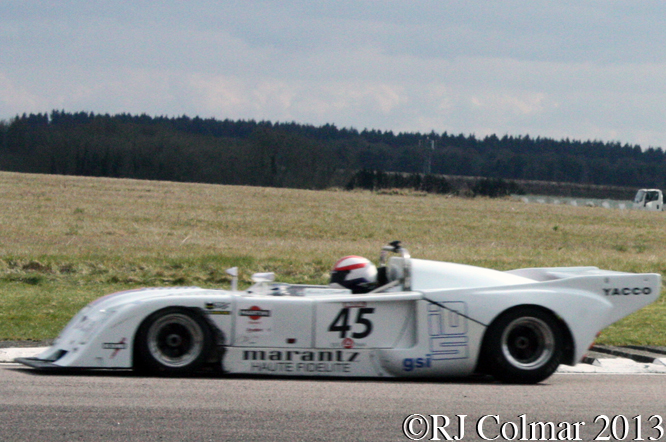
Martin O’Connel came close to scoring a second comfortable win on Sunday with his Chevron B36 above in the Martini Trophy Race however he suffered a puncture which handed the lead to the similar car of Nick Flemimg.

The HSCC Historic Road Sports Race was as mentioned earlier a Lotus Elan benefit, but not before Andrew Sheppard, driving a nimble 1962 Lotus Seven S2, had found a way past the #9 1963 Elan of eventual winner Roger Waite. Andrew unfortunately was soon to retire out on the circuit.
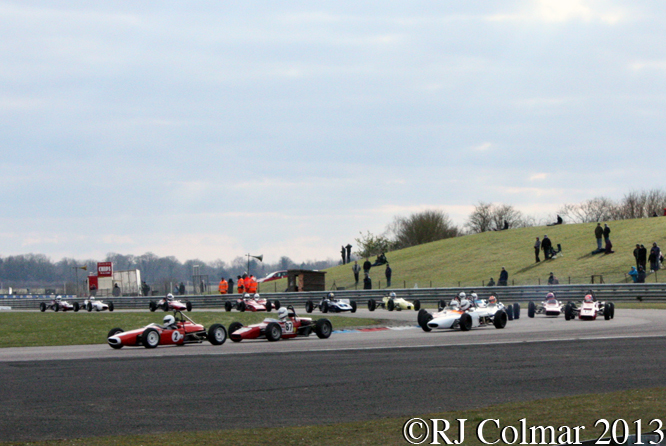
The full grid of Formula Ford cars was thinned out after a contretemps on the opening lap after the first attempted start. Bristol Veterinarian Nelson Rowe, driving the #87 1971 Crosslé 20F, made a great start from the first attempt but was beaten by Benn Simms driving the #2 1968 Jmr 7 Jomo on the second start as seen above. Nelson quickly found away past Benn and drove to his first victory of the day having only to worry if he had enough petrol to make it to the finish after the additional start and pace lap. Former Grand Prix driver Tiff Needell seen above in 7th place second from right was thrilled to find away to a third place finish in his 1971 Lotus 69 and was heard talking about appearance money before committing to making any further appearances in the series.
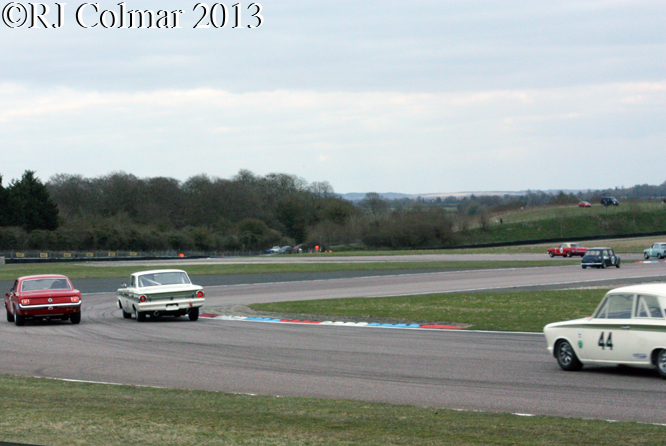
The HSCC Historic Touring Car Race also had to be stopped after Neil Brown went bouncing into what looked like at least 3 barrel rolls at nobel. Amazingly Neil released himself and appeared completely unharmed from the incident. Richard Dutton made a second clean start and headed for a comfortable win in his read and gold 1965 Mustang which can be seen leading some back markers above but it was Mike Gardiner driving a 1964 Ford Falcon who took the restart from the back of the grid who provided most of the entertainment. Mike is seen above relieving the ’65 Mustang driven by Warren Biggs of second place going into Campbell.

Nelson Rowe driving the #1 1979 Reynard SF79 was in command of the Pinto powered Historic Formula Ford 2000 race through out all though teenager Callum Grant did his best to earn a beer driving a 1978 Delta T78 to a commendable second place finish.
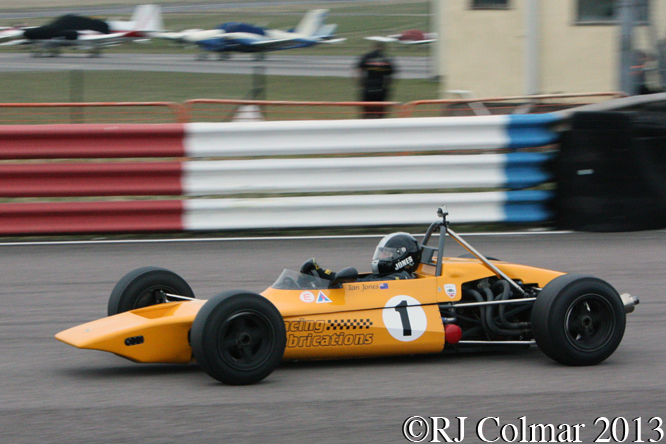
The final race of the day for HSCC Classic Racing Cars was a Ian Jones benefit, he was never headed from poll driving the #1 1969 Lotus 59 seen above in Formula B spec. Again despite the absence of a memorable duel for the lead there were some great scraps going on behind Ian. All in all I got my 12 quids worth on a day where the temperatures were marginally above freezing and a good supply of affordable track side snacks and hot drinks kept my sense of humour from running for the cover of the nearest duvet or three.
Thanks for joining me on this “Nelson Rowes to Double” edition of “Gettin’ a li’l psycho on tyres” I hope you will join me again tomorrow. Don’t forget to come back now !

